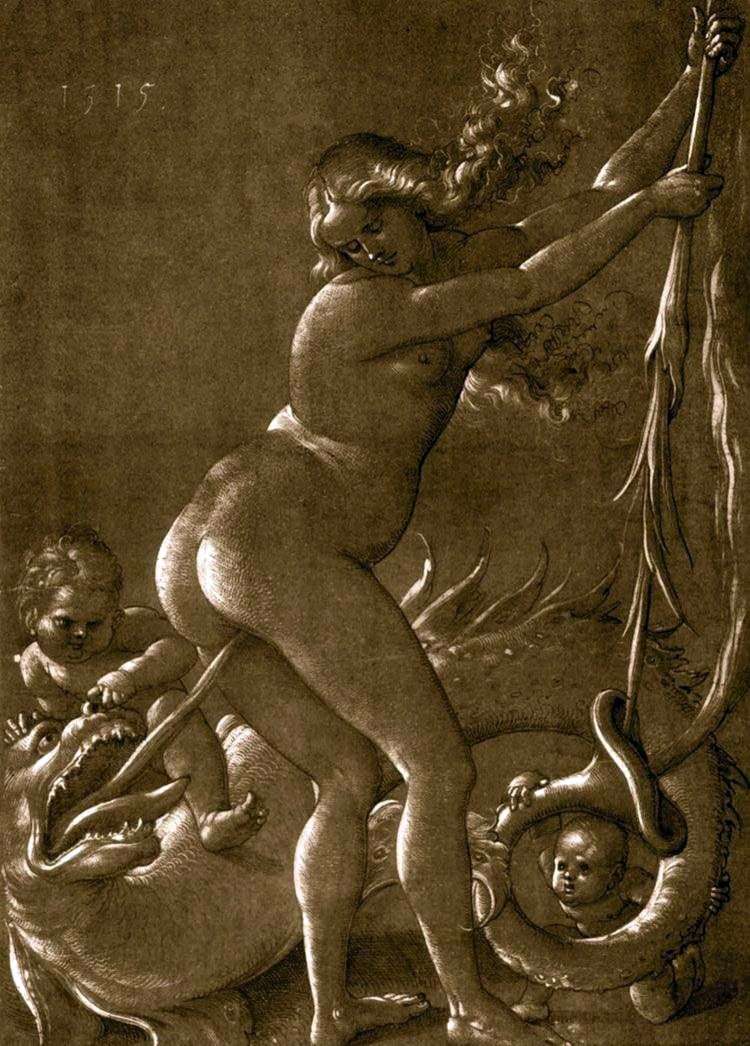
From the history of the German engraving of the Renaissance. The flourishing of the cutter engraving on copper began already in the middle of the 15th century. Earlier, wood engraving was spread. The engraving was in Germany the most democratic kind of art, performing the most diverse functions of both religious and purely secular order. It had the widest distribution and enjoyed great popularity among the people.
In the engraving incarnated a variety of religious subjects, on separate sheets were distributed images of saints, Christ’s passions, as well as comic-frivolous and allegorical skits. In the technique of engraving, calendars and alphabets, playing cards were performed, finally, the engraving in the book played an important narrative and artistic role. So, in the sixties of the 15th century, presumably in Alsace, Master E. S. worked.
In the work of this engraver, one can note the connection with the Dutch art, first of all with Rogier van der Weyden, which is felt in thin slender figures and ugly expressive faces. This artist is credited with a large number of sheets on religious themes and a number of genre scenes, alphabets, coats of arms, etc. The technical side is more developed, but the images themselves are mostly planar, ornamental in nature. The engraving of Hans Baldung “The Witch and the Serpent” is executed in a clear erotic context.
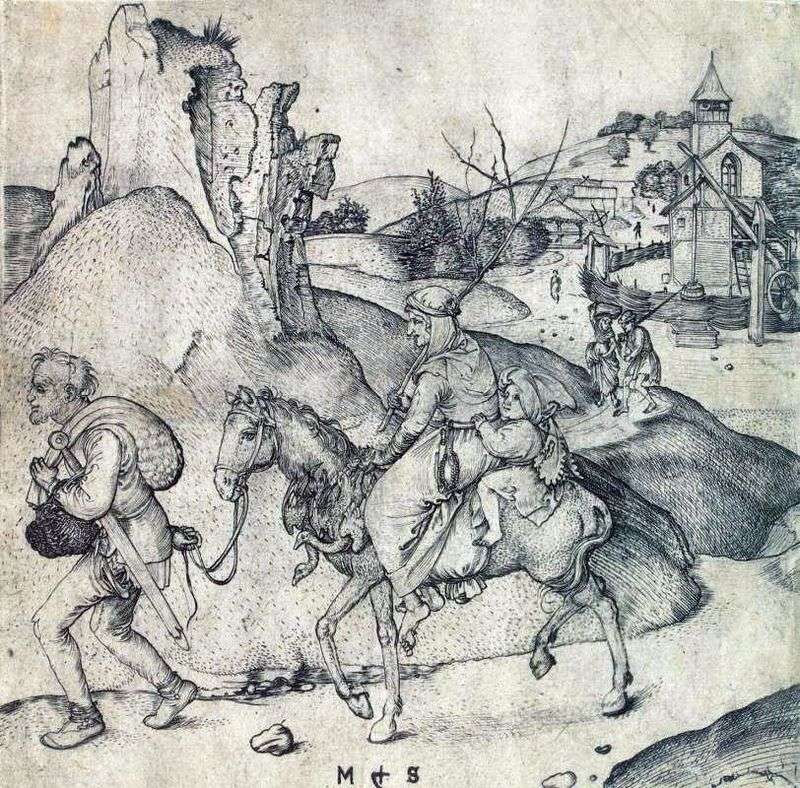 The peasant family on the way to the market by Martin Schongauer
The peasant family on the way to the market by Martin Schongauer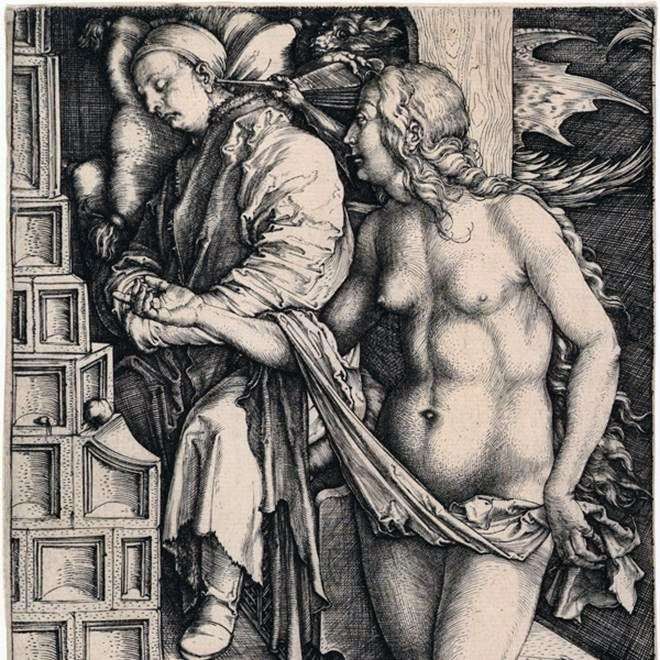 Seduction lazy. Engraving by Albrecht Durer
Seduction lazy. Engraving by Albrecht Durer Allegory of Music by Hans Baldung
Allegory of Music by Hans Baldung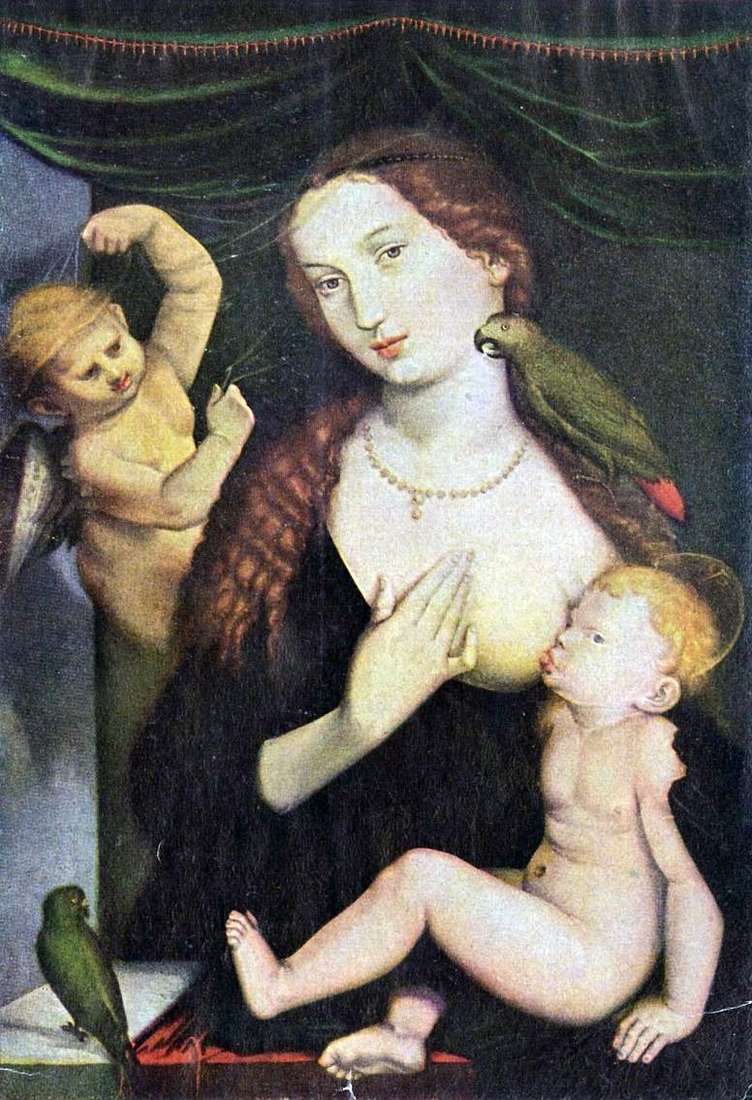 Madonna and Parrot by Hans Baldung
Madonna and Parrot by Hans Baldung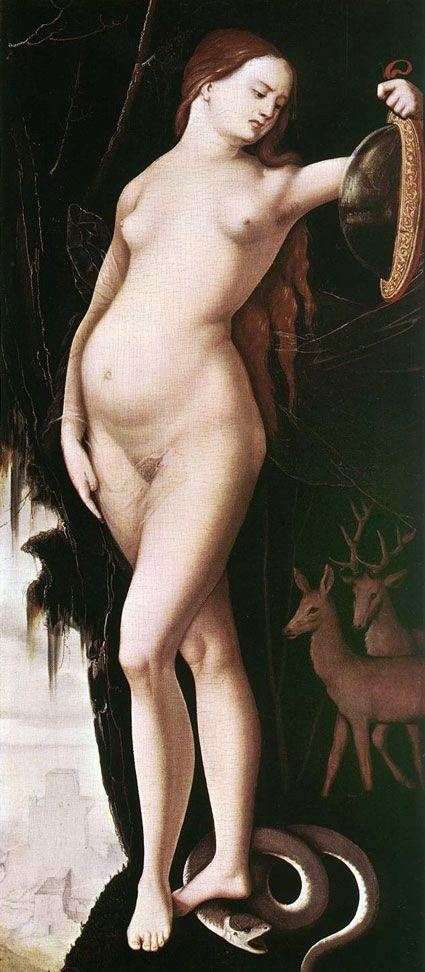 A woman with a mirror and a snake by Hans Baldung
A woman with a mirror and a snake by Hans Baldung Portrait of Jacob von Morsperg by Hans Baldung
Portrait of Jacob von Morsperg by Hans Baldung Rest on the way to Egypt by Hans Baldung
Rest on the way to Egypt by Hans Baldung Death and the girl by Hans Baldung
Death and the girl by Hans Baldung